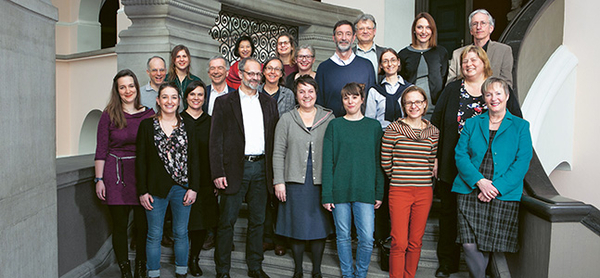The pitfalls of multilingualism

In the humanities and social sciences, collaborating with a sizeable group is easier said than done. A Sinergia project on “Academic Knowledge” took up this challenge and overcame it.
It is nothing unusual for scientists to cooperate with each other in large groups – we only have to think of CERN, for example, with its hundreds of researchers working towards a common goal. This type of cooperation is less frequent – and more difficult – in the humanities and social sciences. Cultural scholars tend to select one particular subject and investigate it thoroughly using a particular methodology. They then publish their results in a monograph.
25 researchers from 5 universities
There are exceptions, of course, such as the research project on “The social construction of academic knowledge since 1830”, which has been funded under the SNSF’s Sinergia programme since 2013 and is now nearing completion. About 25 social scientists and humanities scholars from five universities (the Universities of Zurich and Geneva, and the teacher-training colleges in Zurich, north-western Switzerland and Ticino) are collaborating on this project in three languages. Does that actually work? “It is a big challenge,” says education historian Lucien Criblez from the University of Zurich, who is running the project, “but the overall outcome is positive.”
Translation problems...
The biggest challenge is language: as a means of comprehension, as a tool for analysis – and as an object of investigation. The group meets every six months, with each person speaking their own language. However, since not all the researchers understand every language, things are constantly having to be translated. For a project that looks at the history of syllabuses and teaching content in the German-, Frenchand Italian-speaking regions of Switzerland, using English as a lingua franca would not make much sense, because it would only create even more translation problems: “The integral importance of language to the research topic needs to be taken seriously,” says Lucien Criblez. One example he mentions is that of “Heimatkunde”, the study of local history and geography that has long been taught in the German-speaking part of Switzerland only. In fact, there isn’t even an equivalent French word for the name of this subject. Paraphrasing the German term in French is therefore the recommended course of action. Translating it into English would make things unnecessarily complicated.
A rewarding collaboration
Collaboration is also made more complicated at times by the differing administrative and research cultures of the teacher-training colleges on the one hand and the universities on the other. In retrospect, Lucien Criblez would set up the project in a less complex, leaner way, and for a longer period. Despite the challenges presented by diversity, he feels that collaboration is nevertheless worthwhile. He points out that the researchers realised their findings could not be interpreted in isolation from the cultural and linguistic context. For example, the project has shown that the teaching of literature is valued differently in French-speaking and German-speaking Switzerland, and that Ticino is the only canton in which political education is taught as a subject. Until well into the 20th century, Ticino obtained its teaching materials from Italy, since it was not able to produce its own.
The forthcoming publication of the research results will be no simple matter. Contrary to current practice, the volume is scheduled to appear in two versions, German and French – thus necessitating expensive translation once again.